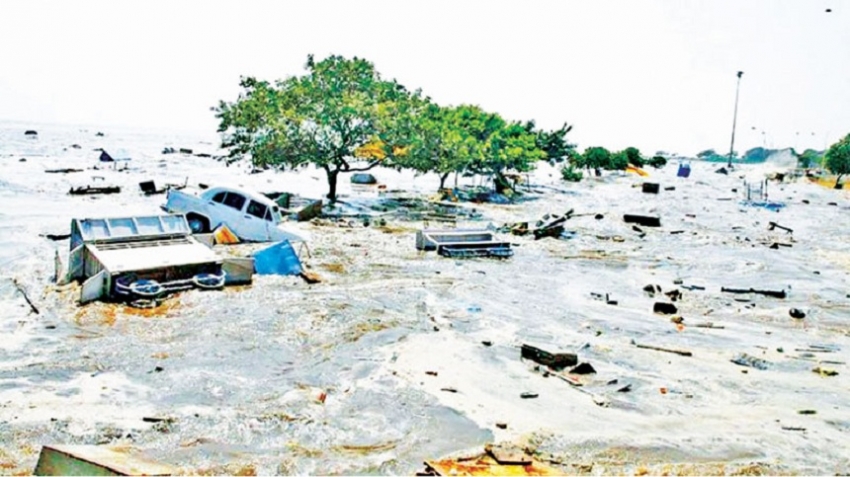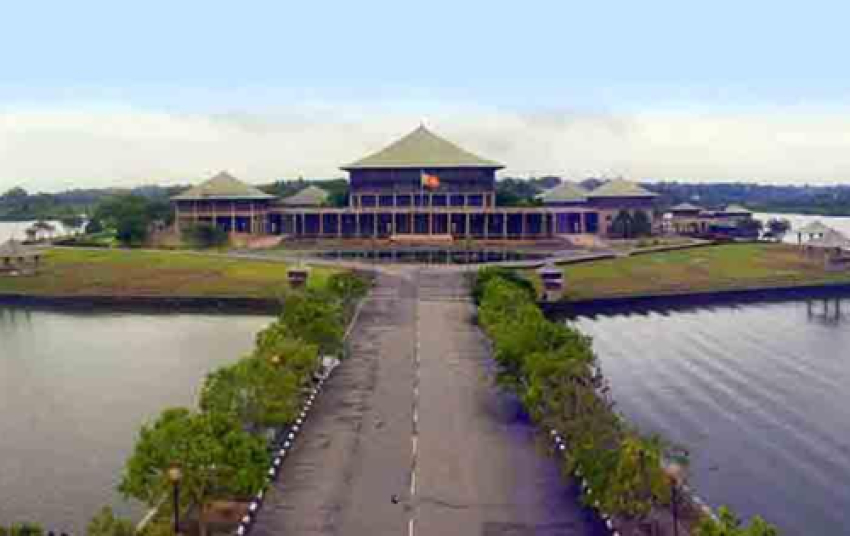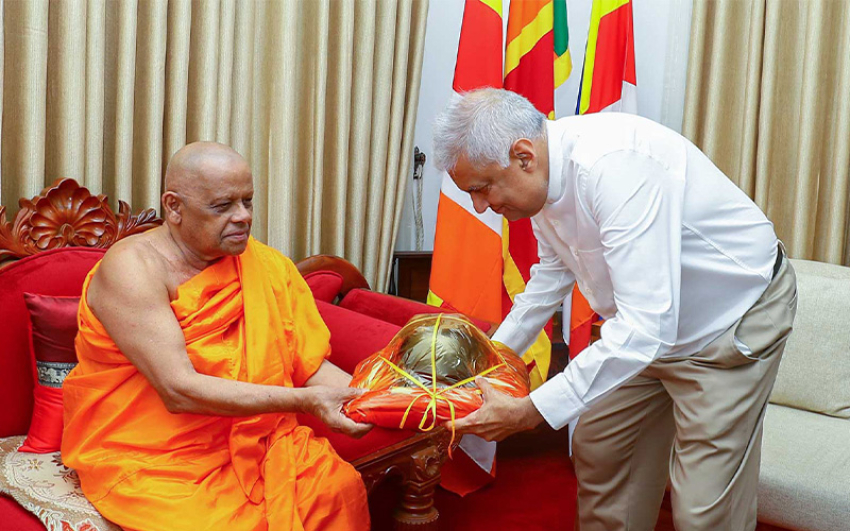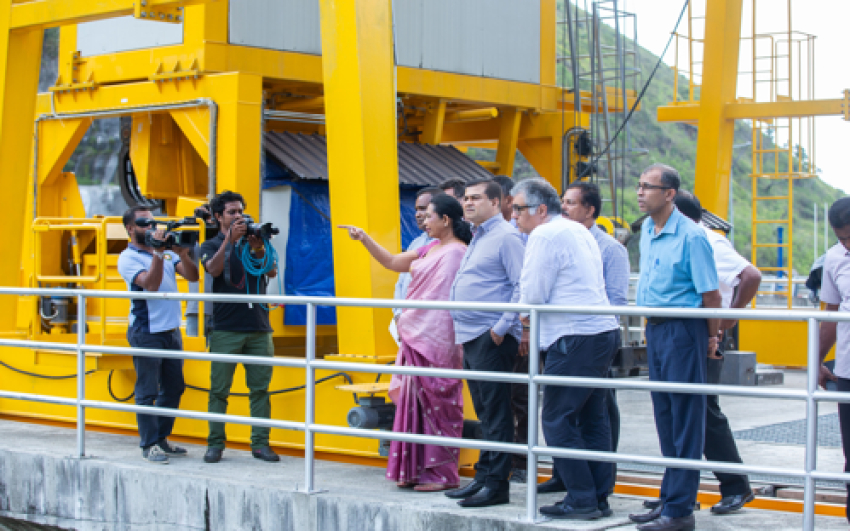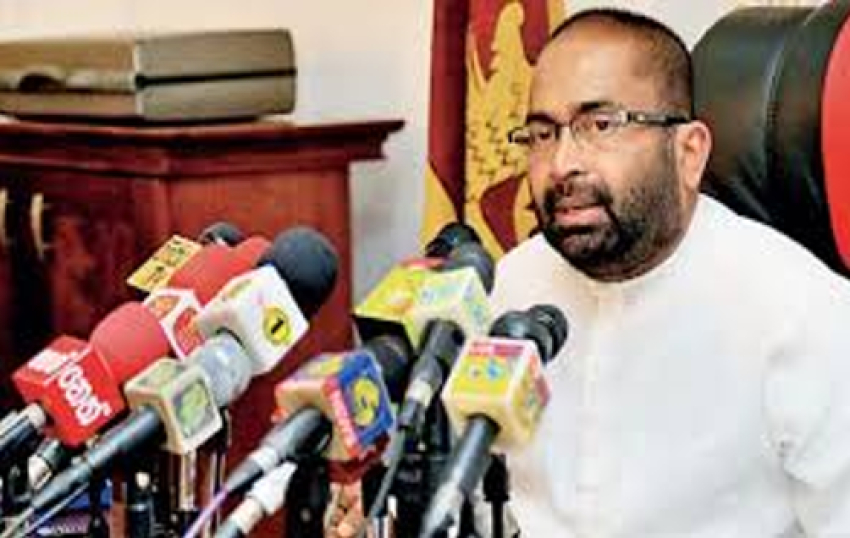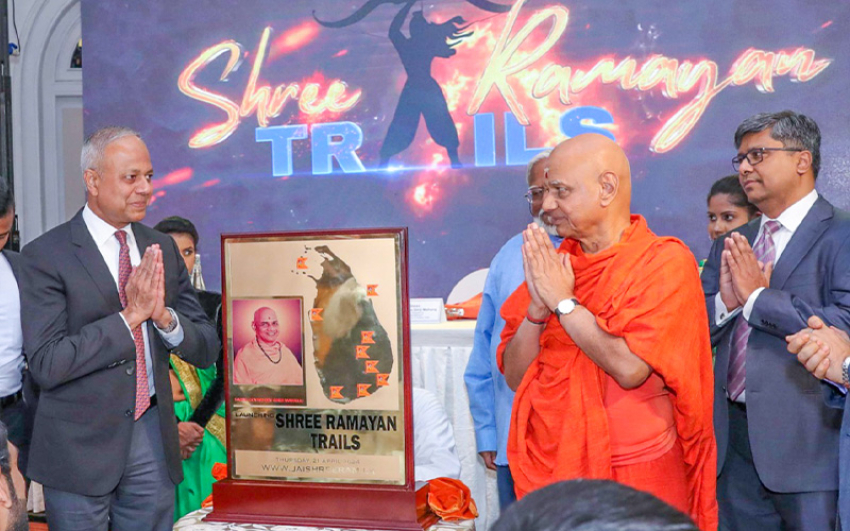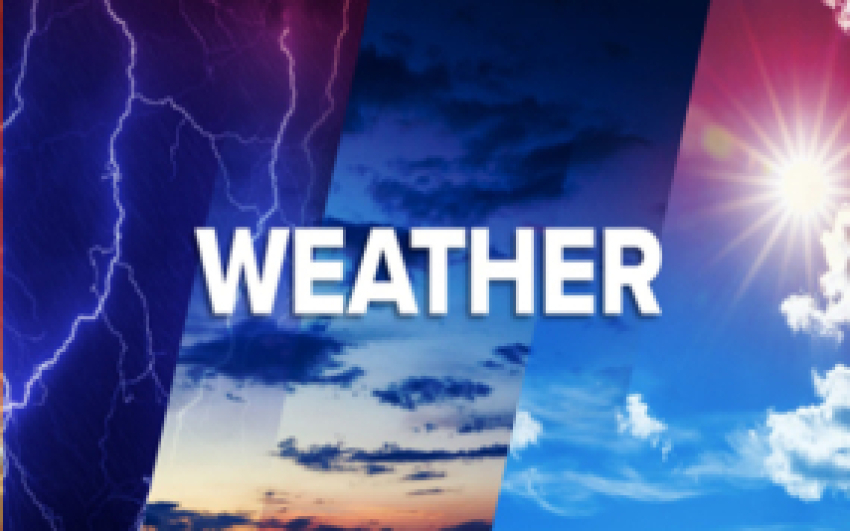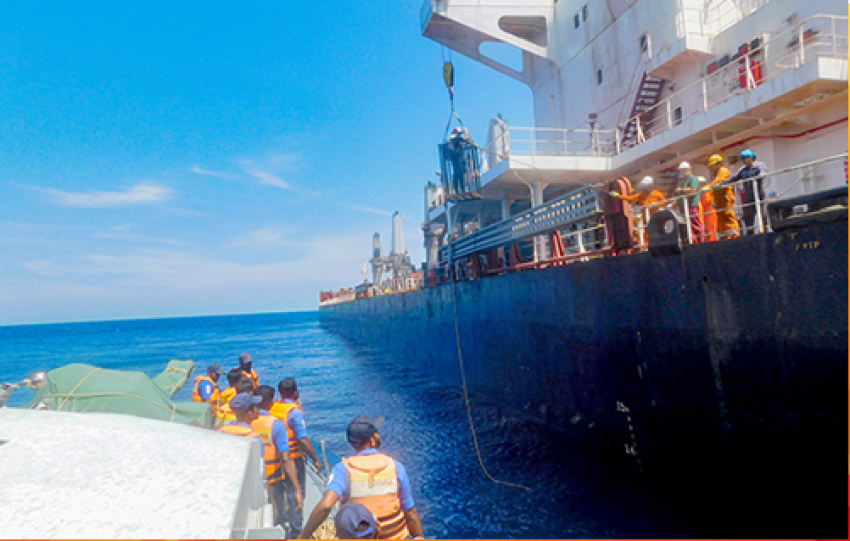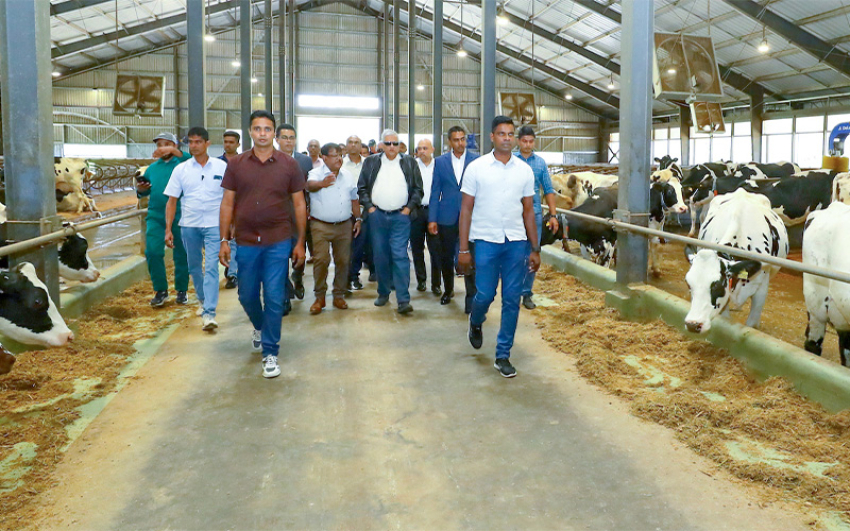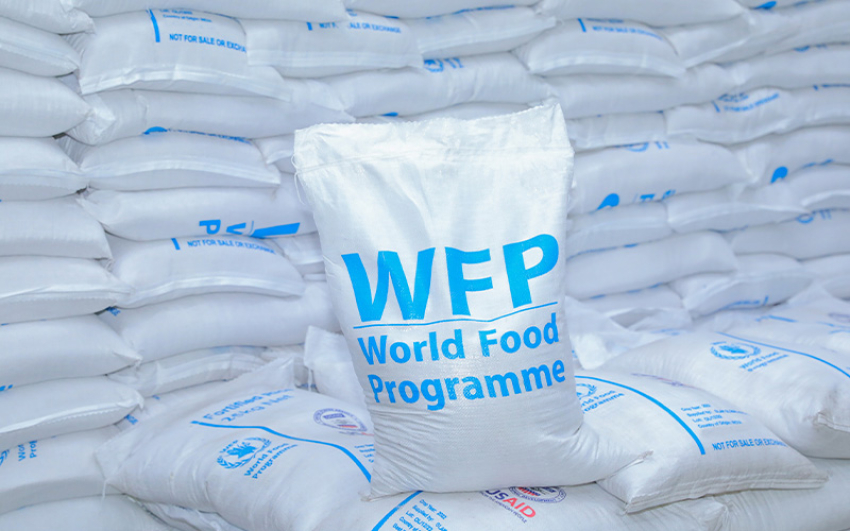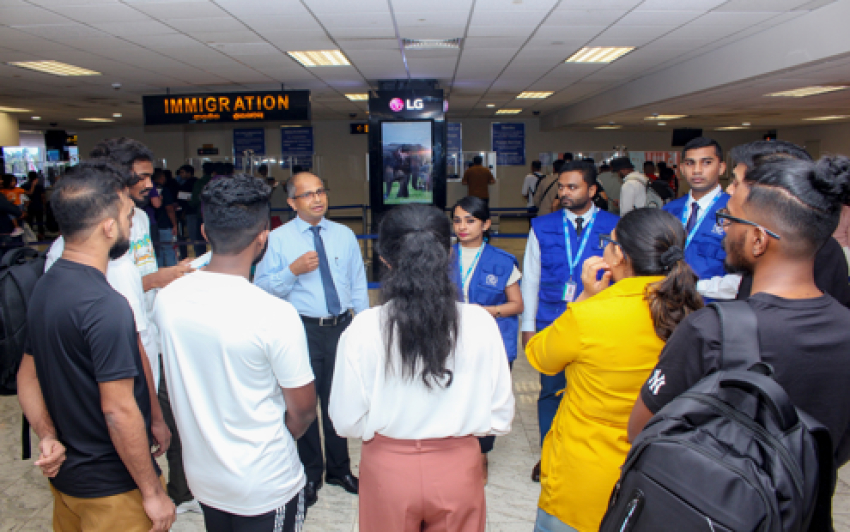Kapila Somaratne Panadura Group Correspondent Mahinda P. Liyanage Galle Central Special Correspondent
Yesterday (26) marked the 15th anniversary of the devastating tsunami which was triggered by a 9.1 magnitude earthquake which occurred off the coast of Sumatra. The earthquake is said to have discharged an energy equivalent to 23,000 Hiroshima type atomic bombs. Within hours of the earthquake, killer waves of tsunami slammed into coastlines of 17 countries extending from Thailand to East Africa across the Indian Ocean.
Although Sri Lanka is located 1,600 nautical kilometres west of the epicentre of the earthquake, the tsunami struck the eastern coast of Sri Lanka almost one hour and forty-five minutes after the earthquake at about 8.45 am local time.
A journalist's experience...
The tsunami waves hit the Panadura and Kalutara coastline around 10.20 am.
On this fateful day in 2004, I was engaged in my normal duties as a provincial correspondent covering a sports meet of the Panadura Police division held at the Panadura esplanade around 10 am. Suddenly, two youths came rushing to me and said they saw that the Panadura River was flowing upstream. I rushed to the spot accompanied by Panadura SSP’s Personal Assistant Inspector Livera on his motorcycle. He warned me that it was an ominous sign of an impending danger and suggested that we should rush to the beach to ascertain what it is. On the way, we visited the Panadura Police Station which was situated 250 yards off the Panadura beach to inform SSP Kithsiri Dayananda about the spectacle.
The sea waters receded few metres from the coastline and then came rolling back in full magnitude destroying everything that was in the Panadura coastal belt devastating nearly 50 thatched houses and killing nearly 80 occupants. Fishing boats anchored in the Panadura Estuary had either overturned or got swept away by the waves. Although Armed forces accompanied by the Panadura Police rushed to search for missing persons, they had to carry the bodies of nearly 74 people to the Panadura Base Hospital.
The entire area was enveloped in slimy mud left over by the tidal waves. The death and destruction caused by the killer tsunami captured newspaper headlines on the following day. An 80-year-old fisherman named Solomon Aiya alias Malu Mama living on the Panadura beach front recalling the December 26 horror told me that he was near the boatyard in the Panadura Estuary when tsunami waves came rolling towards them.
He left his fishing net and soon climbed a nearby coconut tree to save his life. However, all his family members were killed during the tragedy. It should be recalled that soon after the tragedy occurred, the then Prime Minister Mahinda Rajapaksa summoned an urgent Cabinet meeting to take stock of the situation and damage caused and deployed the security forces and police to undertake search and rescue operations.
Accordingly, a massive post-tsunami reconstruction and compensation payment programmes spearheaded by the Prime Minister were launched with foreign and local funding and assistance. Telltale signs of the tsunami, which struck Panadura coastal area, are still visible in some areas.
Perhaps the solar eclipse that occurred yesterday may be a grim reminder of the Tsunami holocaust which occurred on Boxing Day 15 years ago.
battle for survival....
The Daily News talked to some of the people who survived the disaster.
D.K. Chandramali, 55, Hathpalena, Ahangama
I met Chandramali with her husband Amarasena Alwis Wijewickrama, 57, at their small teashop on the Galle – Matara Road in Hathapalana.
“On that day, we were doing our usual domestic chores when at once our younger brother came running from sea yelling out that sea was flowing ashore and asked us to run away. At that time, they were harvesting lobsters in the nearby sea.”
“My sister took her two children by her hand and ran. We all started to run towards the countryside. Many of them could not run into the village as they had to cross several limestone quarries which had been dug along the other side of the road. The railway line was also another hurdle for people to cross into the village. The railroad runs on an elevated land in our area. When the second wave came, the two children who were hanged on to their mother were released from her hand and went disappeared in the huge wave. My brother who saw the dreaded sight rushed to our place with an arecanut trunk, clogged it between two trees and asked us to hold on to it.”
“After the water level receded, we all who survived the disaster stumbled over mangled debris in search of our children and other missing relatives. We could not find anyone as they had been drifted away into the sea. Later, as we decided to go back, we heard a yell from atop of a tree nearby. It was my husband’s sister. She had been thrown high by the second giant wave and dumped her on the tree. Subsequently, our brothers got her down with the help of an improvised ladder.”
“As we failed to locate even bodies of our children or the relatives, we all walked with much difficulty to Gurullawala temple which is about four kilometres away from our village. The chief priest of the temple provided us with lodging and food with the help of the villagers. We lived in temporary tents for about three months. Finally, we received a house in the Akkara Wissa (Twenty Acre) Tsunami Village. My husband, his sister (a widow), two brothers, husband’s another sister, my own brother and I, all live in one house. We were given two houses, but the Grama Niladhari of our area at that time deprived us of getting the second house on personal rancour and he sold it to another person. We did not receive any relief donations given by the Government and various other organizations. We received only some kitchen utensils given by the chief monk of the temple.”
“My husband’s father, two sisters with their four children lost their lives in the catastrophe. All seven bodies were kept in one coffin and buried near our house. My son is an Army officer in the Gemunu Regiment. He is Corporal Wijewickrama who fought in the battlefield since April 2009. On April 29, he was injured in operation and lost one of his eyes and he is at present having incurable insanity. He is in the Abhimansala Wellness Resort in Kamburupitiya.”
“My brother is a fisherman. He had a boat but it was destroyed in the tsunami. He did not get a new one. Now he is harvesting lobsters using nets. It is risky to live near the beach. But, we are forced to live here as we have no other place. So, we do not leave this location.”
B. Krishanthi, 52, Haritha Gama, Walahanduwa
“My youngest son was three and a half years when the tsunami tragedy occurred. Our house was at Mahamodra near the school. On that day, at about 8.30 am, I went to the bus halt with my youngest son to get a bus to go to Galle town. Suddenly, I heard yelling and shouting of people. I saw seawater was coming up to the land with a gradually increasing height. I got hold of my son by hand and started to run for life. At once, a powerful wave struck us and my son was released and slipped from my grip. He was drifted towards the nearby river and I too was floated in the same direction and I thought it was the end of my life. However as I was floating, I was trapped on a top of a tree where I remained until the water receded.
With the help of some people, I got down from the tree and ran towards the direction where the youngest was dragged towards. My son was trapped between two trees and he was alive. We took him to the hospital.
My eldest son who was nine years old, was at home when the tsunami attacked us. He had been floated away out of the house and had luckily left on the first floor of a nearby two-story building.
My husband who was at a shop in Galle town sustained severe injuries.
We lost our dwellings and we went to the village temple where we had to stay for some days. We had to live in temporary tents for about three months. Later, we received this house at Haritha Gama (Eco Village) at Walahanduwa. In the aftermath of the tsunami, we had to undergo grievous hardships.”
H.L.Shantha, 51, Haritha Gama, Walahanduwa
“This new village ‘Haritha Gama’ was constructed by a German humanitarian aid organization. We are ever grateful to Germans for their utmost sympathy and kindness displayed on us at our time of distress. This village was constructed by the donations made by German people.
They planned this village of 134 houses methodically with all facilities.
They constructed motorable macadamized roads throughout the village with systematic drainage systems, fixed solar panels for street lightings and erected a high water tank stand with two 1,000-litre storage tanks on it. They built tube wells to supply water to them.
However, our state authorities failed to maintain those valuable infrastructure provisions. Now, the tube wells are neglected. Roads have not been properly maintained or repaired. Now all roads are highly dilapidated. The German philanthropists also constructed a fully-fledged community hall and a playground with a children’s park. In the beginning, we used the hall for various functions. Once the community hall was used by a private entrepreneur. Now, it has been taken over by the National Youth Corps together with the playground.
Even after 15 years, our state authorities have not been able to give us the respective deeds for our lands. However, some have been able to get their deeds. The Pradeshiya Sabha does not provide us with their community service in the same way they deliver them to other civilians. The waste collecting tractor does not cover our area. We are not given equal opportunities in school admissions. Our children are maltreated in some schools. The principals hesitate to admit our
‘Boxing Day’ tragedy 15 years ago
Peraliya -- 26/12/2004- 1,200 lives lost in history’s largest single train tragedy
Friday, December 27, 2019 - 01:00
Print Edition
Features
KKS Perera
Two carriages of the train that was hit by the December 26, 2004 tsunami waves in Peraliya.
Two carriages of the train that was hit by the December 26, 2004 tsunami waves in Peraliya.
December 26 is called Boxing Day. The Tsunami that occurred on a Boxing Day exactly 15 years ago destroyed 230,000 lives of all nationalities and religions, proving that nature does not distinguish or discriminate. It left millions widowed, orphaned, or distressed of their loved ones. Giant tidal waves lashed 3/4th of the island’s shoreline plunging into a crisis of exceptional nature. With a sense of shock and dismay that we learned by 9.30 am on that morning of December 2004, that a gigantic earthquake had occurred a couple of hours before close to Sumatra. Earthquakes are measured on the Richter scale.
The average strength of earthquakes we had heard up to this point was between 4.5 to 7.5 on the Richter scale. However, the Boxing day Sumatra earthquake measured 9.4. By any standards, this was certainly an enormous quake.
December 26, 2004, Sunday was both the Buddhist full moon day and the Boxing day (Christmas) holiday weekend. Tsunami-rail disaster 2004, occurred when a crowded passenger train was destroyed on the coastal railway line in Sri Lanka by the tsunami which followed the earthquake. The tsunami caused over 31,000 deaths and billions of rupees in property destroyed in the island. It covered 3/4th of the island’s coastal areas.
Ceylon Observer of January 4, 1907, carried a news item …
“Strange Tidal Effect at Galle”- ‘The Sea Recedes 50 Feet’--Fish and lobsters stranded—Galle, Jan. 4, 4.38 pm….. ‘The sea in harbour first receded at 1.30 in the afternoon some 35 to 50 feet. The whole coast round the harbour is dry for the same distance. Fish and lobsters were caught by coolies and others. The sea receded again several times at intervals of half an hour or so….the incoming swell has a strong current. There is very high water at the jetty. …The lighters landing rice from “Loodiana” are in danger. Some boats narrowly escaped being wrecked on the rocks. ….’
Katukurunda train accident in 1928
‘Village Life in the Forties: Memories of a Lankan Expatriate’, Shelton A. Gunaratne (Arcadius) says, ‘…hirigal thattaya nicknamed because he was bald-headed had an alias Mullewatte Mudalali who had allegedly become rich by pilfering from the bodies of those who died in the Katukurunda train accident –page 64. Katukurunda accident that happened on March 12, 1928, is significant for two reasons; first head-on train collision and the train accident with the highest death toll up to 2004. It happened when two passenger trains powered by steam engines travelling on opposite directions on a single line track collided head-on between Kalutara South and Katukurunda killing 28 including the staff and passengers.
Tsunami at Peraliya
Train no, 591 was a normal train operating between Maradana and Galle that left Colombo's Fort Station shortly after 6.50 a.m. with over 1,000 passengers, and a few more hundreds entrained on the way. At Peraliya, Telwatta, the train stopped for signals; it was only about 200 metres inland from the beach. Locomotive Manitoba, a class M2a --model G12, built in 1956 pulled the train.
The Pallekele seismic monitoring institution’s instruments registered the 9.5 quake within minutes but they did not consider it would cause a tsunami of such magnitude to reach us. All efforts to notify about it failed because no one was there to answer the call, they confessed.
At 9.34 am in Peraliya, passengers saw the first gigantic wave that was thrown up by the quake. Water surged around it. Hundreds of villages, thinking the train to be the safest, climbed onto the carriages to avoid being brushed away. Some even stood behind it, hoping it would protect them from the approaching waters. The first, however, flooded the compartments and caused terror amongst the passengers. Within the next ten minutes a huge wave pushed the train up and smashed it against the coconut trees and buildings which lined the rail track, devastating those inside as well as who sought shelter behind it.
The eight huge cars were packed with passengers and villages. The doors could not be unlocked while the compartments got filled with sea water, drowning most of them under the water that splashed over the wreckage many times, and many were crushed by debris. Locomotive staff, Janaka Fernando, engineer and Sivaloganathan, his assistant died at their posts. The tsunami waters rose 8 to 9 metres above ground level and 2 to 3 metres above the top of the train for a few minutes.
Immediate rescue was not possible due to the enormous nature of the disaster, and the local rescuers were unable to cope with the destruction. The authorities had no idea of the location where the train was for a few hours. It was finally spotted by a forces helicopter around 2.00 p.m.
Hundreds of people with broken limbs and severe injuries died before they could be taken to a hospital. Many bodies were not retrieved for several days. Members of victim’s families moved down to find their relatives themselves. A forensic team fingerprinted and photographed the unclaimed bodies at the site as well as at Batapola Hospital so that the records could be saved for future identification after the bodies were buried.
The sub-urban town of Telwatte/Peraliya suffered extensive damage. More than 200 of the unidentified bodies retrieved were buried three days later in a mass grave. Engine 591 Manitoba and two damaged carriages were repaired, rebuilt and were returned to Peraliya four years later on December 26, 2008, to the exact place where a memorial was built to remember those who lost their lives.
The huge waves travelling at over 800 Kms per hour destroyed the entire coastal belts of Sumatra, of Nicobar Islands, Tamil Nadu, Sri Lanka, and the Maldives, which forced in a westerly course because of land obstructions on the eastward end. It badly affected the Province of Aceh, Indonesia where it was estimated 120,000 perished. Originally generated by the movement of the sea-bed near Sumatra, the Tsunami waves took a little over two hours to reach the island of Sri Lanka, travelling from its epicenter in Sumatra along the ocean. The wave generation clearly lay within the earthquake belts.
World train disasters
The second highest number of lives lost in train disasters was recorded in 1981 in Bihar, India that killed 800 when a cyclone blew a train into a river. More than 380 were killed in a gas explosion in a train in Ufa, Russia in June 1989. In August 1995, 310 were killed in a train collision in Uttar Pradesh, India. 315 were killed in a fire on train travelling to Cairo in February 2002. In February 2004 in Neyshabur, Iran - at least 300 were killed when a runaway train exploded. More than 200 killed when a passenger train and a goods train collided in Dodoma region, Tanzania in June 2002.
Viharamaha Devi and Tsunami?
Two millennia ago, Viharamaha Devi, the only daughter of King Kelanitissa volunteered to sacrifice her life, for the sake of her countrymen.
Kelanitissa punished a monk by boiling him in an oil caldron. As the story unfolds…, Gods, infuriated over this brutal act, made huge waves of the sea rush inland causing destruction. A well-defined ‘plot’ by smart story tellers made people laugh, (not meant to be taken seriously) was ‘Tsunami’ the Japanese term meaning ‘harbour wave’ which was hence unfamiliar to Sri Lankans. The Hawaiian Tsunami Monitoring made contact with a senior minister in the early hours of Sunday, December 26, 2004. The message read, “There was a tsunami coming from Indonesia in two hrs”. The minister lost no time, unlike on 21/4 Easter Sunday, acted promptly, and ordered a delegation to Katunayake Airport with a paging board,
“Be Peaceful and Useful”
Thursday, December 26, 2019 - 01:00
Print Edition
Features
Daya Dissanayake
“Be Peaceful and Useful” were the four words used by Ajhan Buddhadasa to define Buddha Dhamma. If we can follow this philosophy then we can all be prepared to face any disaster, natural or man-made, from prevention, to recovery.
Nothing is permanent, either natural or man-made. Once we accept this fact, it is easier to face any danger, disaster, calamity. There is always an effect, from every cause, and sometimes we are not aware of the cause or we ignore it, and thus we are not prepared to face the effect. However, we have the intelligence, strength and the backing of the latest technologies to face any disaster.
What we need is to be together, as one people, in our village, suburb, town, city and our country. We are all human beings, children of our Motherland and so we can face any situation as one group. That is where we need to be Peaceful towards all life.
Early warnings
There is so much we can learn from the way we faced the tsunami which devastated a part of our country. Early warnings are readily available now. We have such advanced communications, not only by radio and television, but by our mobile phones, which reach every nook and corner of the country. What is important is to ensure that the warnings are as accurate as possible, and the ability of the authorities to monitor such warnings to ensure their accuracy and how they are presented to the people, without creating unnecessary panic. It is the responsibility of all of us to take any such warnings seriously and to ensure that the message is shared with others who may not have received it, or are not taking any action.
The next step should be to heed the advice of the authorities regarding the safety precautions we should take. A tsunami or a cyclone warning should give us sufficient time to escape to a safer location. It may not be possible to give such advance warnings about floods or landslides, but the general warnings should make us alert. At such times we should be able to decide what we value most, our lives or our valuables, material things and property. We should be able to escape with our lives first. All that we leave at home should be there when we return, or at least some of it. We can always recover and rebuild our lives. We can also help each other, share what we have, as one family, after any disaster.
This is where we need to be honest, and we could expect all our neighbours to be honest. If we are together, and vigilant, there would be no opportunities for inhuman criminals to loot and vandalise our lives and property. Our vigilance also would ensure that all assistance and aid offered after a disaster are distributed fairly and are not abused, misappropriated or wasted. We need to be alert, because there could always be a few anti-social elements among us.
During any danger or disaster, we need to be Helpful. We need to be totally unselfish in trying to help all the others around us, the weak, sick and the feeble, children and the elders. We should see them all as members of our extended family, our grandparents, parents, uncles and aunts, siblings and cousins, and children. It is our responsibility, duty and obligation to care for all of them.
Disaster preparedness
A good example of disaster preparedness was seen in Odisha in 2013. The state machinery, armed forces and social organisations managed a massive evacuation of over one million people, from the expected landfall areas. Only about 23 people died in the disaster, because they learned from the 1999 disaster where over 10,000 people died. It just shows the urgency of informing the people in advance, convincing them of the need to move away, and the acceptance by the people of the message and instructions. This requires a high level of confidence among the people and the authorities, which cannot be forced upon them.
While we prepare to face disasters, we should also have to take long term measures to prevent some of them. Though a tsunami and a cyclone cannot be prevented, floods, landslides, forest fires and epidemics could be prevented or controlled to some extent. We as a society, as people responsible for causing such disasters, or contributing towards them, we should take more serious steps to listen to our conscience, and to the professional advice of those who are studying such disasters.
Unauthorised filling up of low lying lands, clogging up drains, canals and even rivers with non-degradable garbage are some of the major reasons for flooding. Deforestation, clearing up mountain ranges, illegal mining are major causes for landslides. We cannot blame nature for these disasters, and we cannot blame the authorities for causing them. We have to blame ourselves.
Nature is more powerful than all our intelligence, technology and determination. Once we accept this fact, we are able to respect the natural forces, and instead of fighting against these forces, try to accept the inevitable, the powers of nature and natural laws. We have to live in harmony with nature, not fight against it or consider nature as our rival. We are only a minor element in the ecosystem. By trying to interfere with the system or trying to defy it, we only bring more disaster and destruction on ourselves.
The ultimate aim of disaster management is to save lives, preserve the environment, protect property and the economy of our country. We cannot dissociate ourselves from the functions of prevention, mitigation, preparedness, response and recovery, expecting the state machinery and authorities to handle everything. We have a responsibility, to our families, our neighbours, our country and our future generations to make our maximum contribution for disaster prevention and management. We should not limit ourselves to discuss these issues once a year, we need to be vigilant and take whatever action we could, throughout the year. Be Responsible, be Peaceful and be Useful.
“Welcome--Mr. Tsunami of Indonesia.”children to schools

